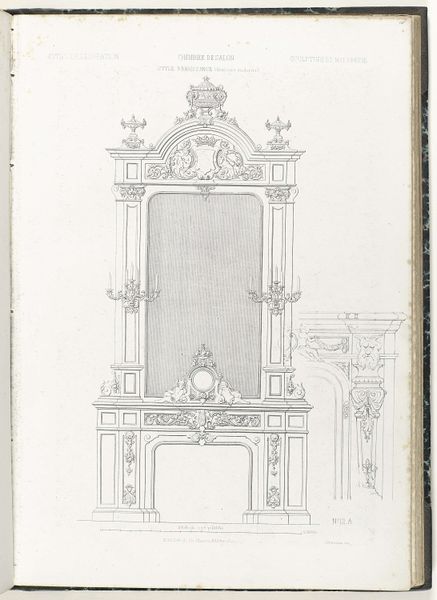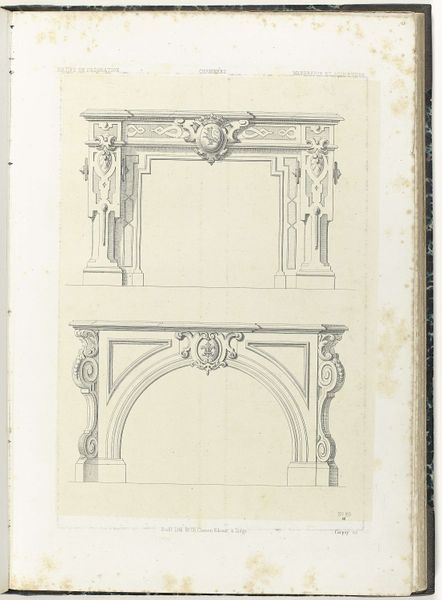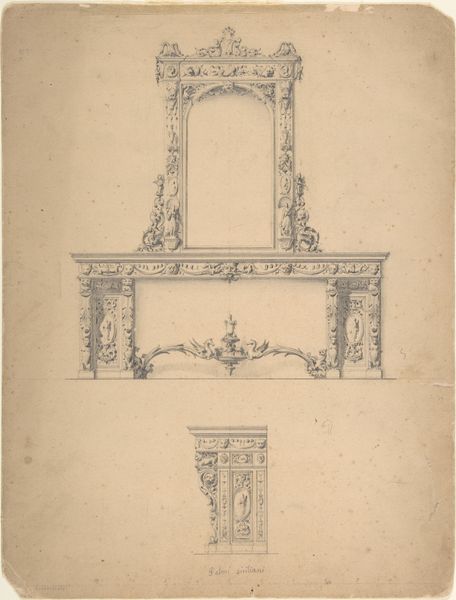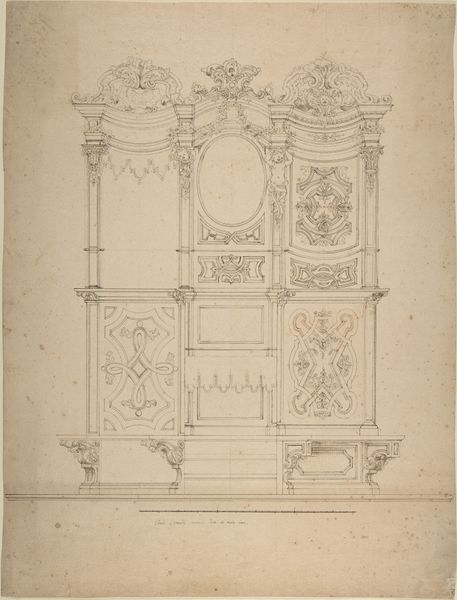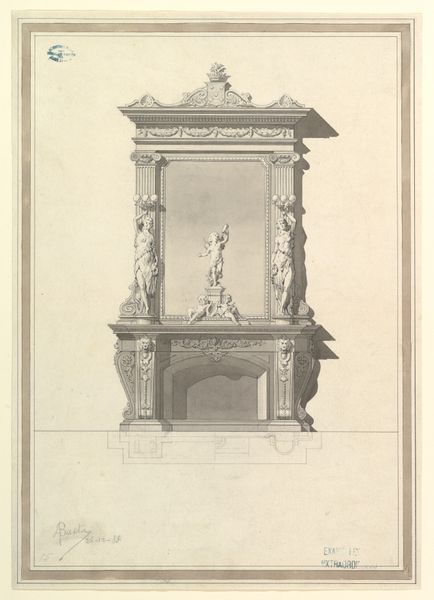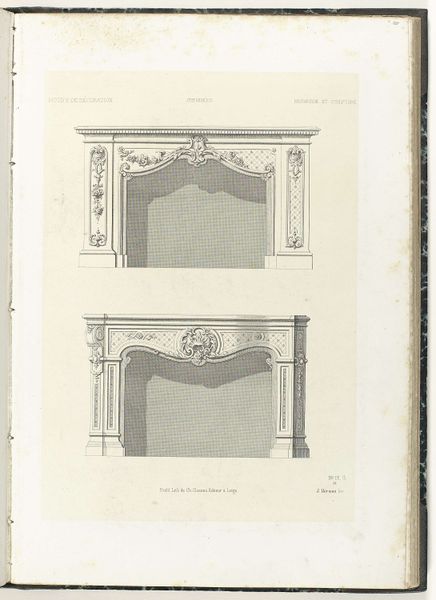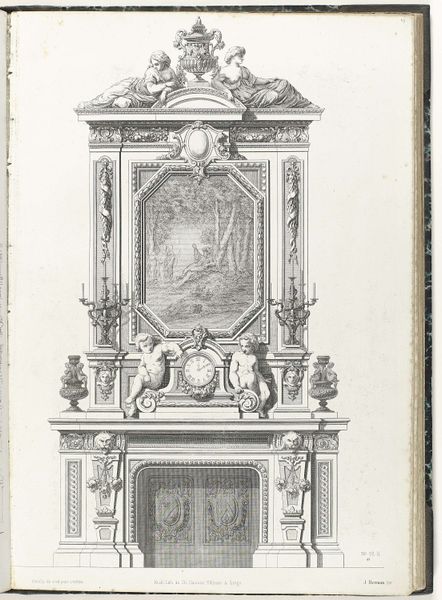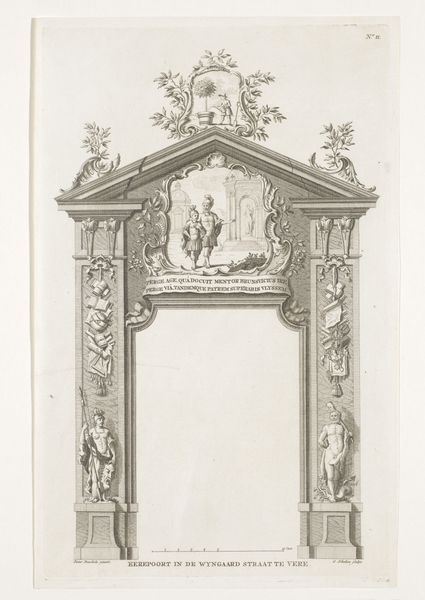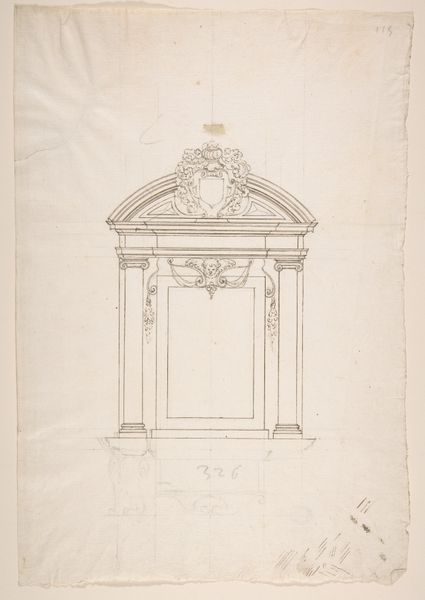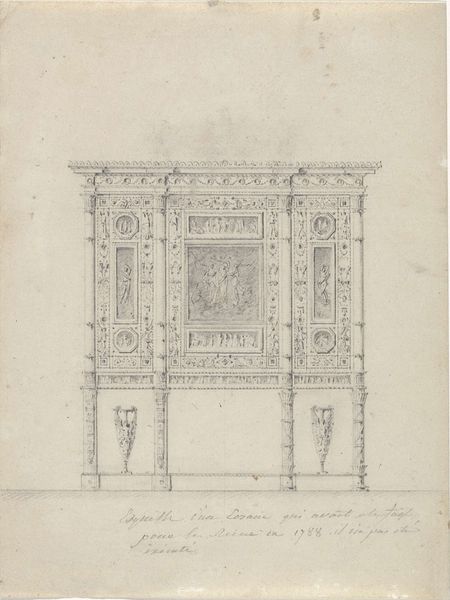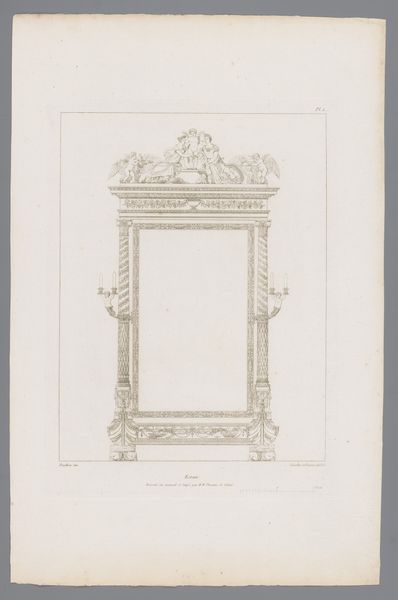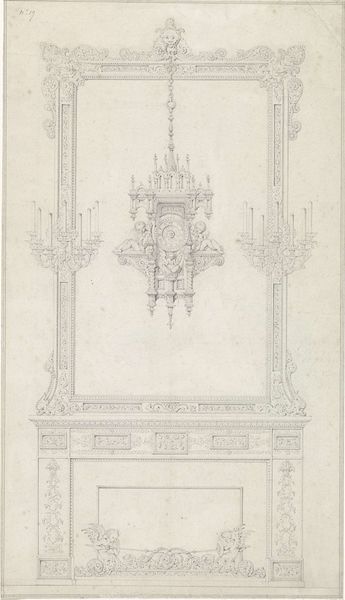
drawing, print, paper, engraving, architecture
#
drawing
# print
#
paper
#
geometric
#
academic-art
#
decorative-art
#
engraving
#
architecture
Dimensions: height 418 mm, width 290 mm
Copyright: Rijks Museum: Open Domain
Editor: So this is "Boven- en onderkant van onderboezem", from circa 1866 to 1900 by Charles Claesen, it seems to be an engraving printed on paper, depicting a fireplace. It has a very architectural feel with geometric shapes. How do you interpret this work? Curator: This print provides a window into 19th-century modes of artistic production, specifically concerning architectural designs. Observe how the means of reproduction – engraving – allows for dissemination of these designs on paper to a wider audience, influencing taste and construction practices. We should be less concerned about the high art, and focus instead on how this was made. The material processes speak to a broader system of labor and knowledge sharing, don’t you agree? Editor: That's interesting. I was mainly focused on the aesthetic aspects and the detailed craftmanship within the architecture itself. But seeing it as part of a larger system makes sense. Curator: Exactly. Consider the paper itself: its sourcing, manufacturing, and cost reflect economic and social dynamics. The engraving technique—how does that inform the distribution and consumption of such architectural plans? Think about how that influences labor and available resources, such as metal and manpower! What socioeconomic class would commission or even consider such a fireplace design? Editor: Thinking about it that way opens up so many new perspectives! I guess I hadn’t thought enough about the connection between the art itself and the resources it took to make it. Curator: It’s all about grounding the artwork in its material reality. What do you make of that connection now? Editor: It emphasizes how intertwined art, labor, and society really are, that even this image hints at so much more than just a design for a fireplace. It is more about the time and making involved in the production. Thank you for broadening my perspective. Curator: Likewise. It is helpful to revisit seemingly traditional art forms while keeping production, labor and materialism in mind.
Comments
No comments
Be the first to comment and join the conversation on the ultimate creative platform.
